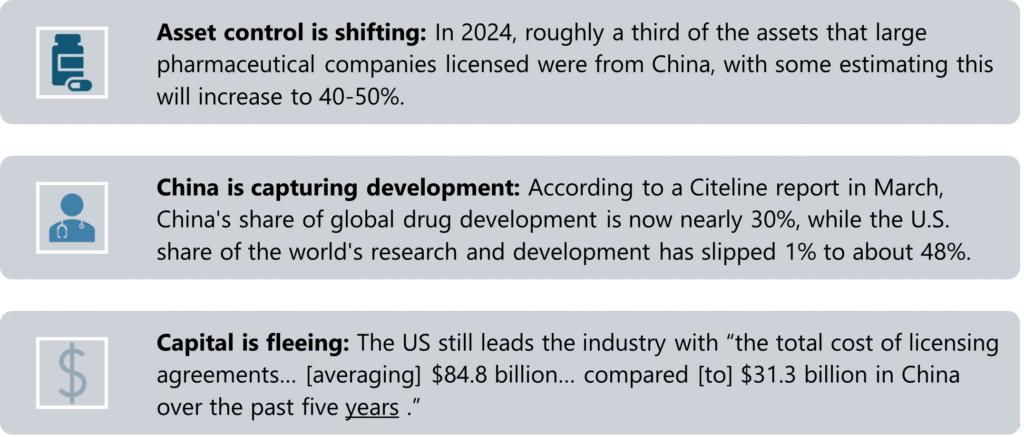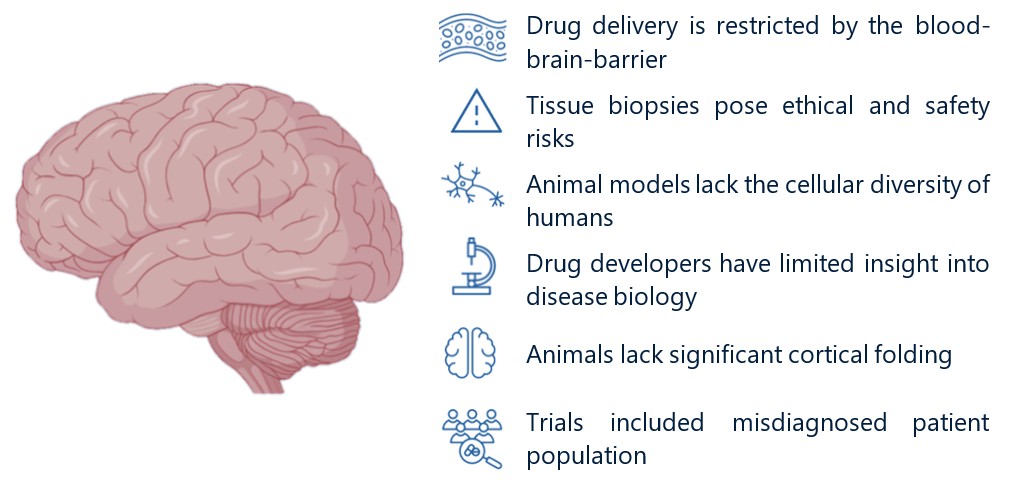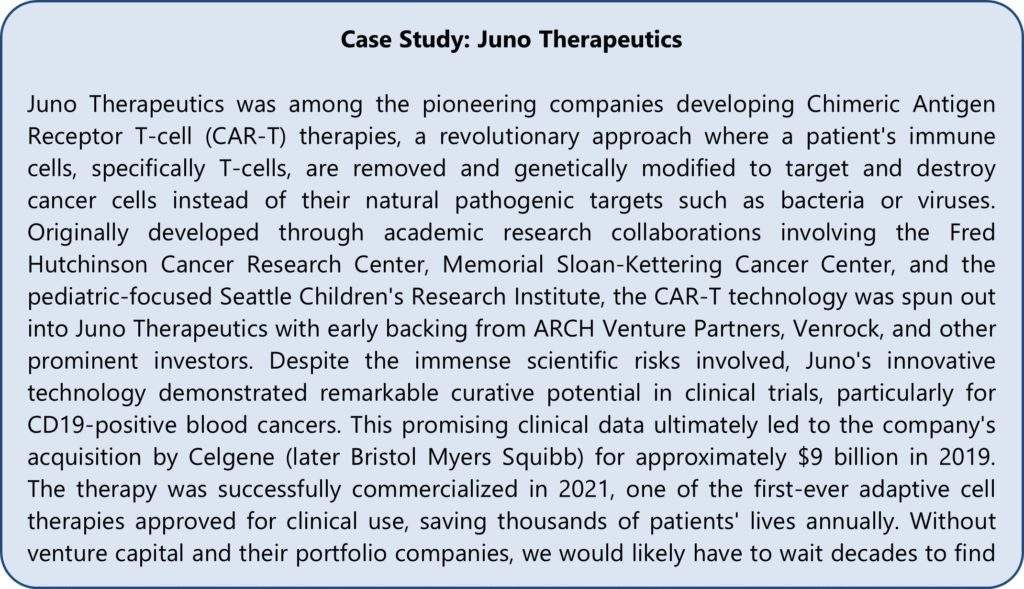December 2025
The promise of precision medicine has been to deliver safer, more effective treatments by tailoring them to the unique biology of disease. Historically, most treatments have only provided patients with symptomatic relief and rarely corrected the underlying disease biology, leaving them inadequately addressed. In 2003, the mapping of the human genome gave scientists a foundation to understand the link between genetic mutations and disease. Researchers have since continued to map other advanced “omics” such as proteomics and metabolomics. These high-resolution biological maps provide the tools to understand biology in finer resolution and to identify which genes and pathways result in disease. These mapping techniques allow researchers to develop drugs directly targeted to treat diseases and, in some cases, correct the underlying disease pathways.
This shift has transformed drug development from the creation of blunt tools to the crafting of surgical ones, redefining what is possible in therapy design. Targets once considered too dangerous to drug have become standard of care and transformed outcomes for patients. While the most profound impact has been in oncology, precision medicine is now unlocking disease-modifying targets far beyond cancers. In monogenic diseases, it has brought the field closer to true cures, and in immunology it has enabled the selective elimination of disease-causing cell types.
By examining biology at high resolution, scientists can pinpoint vulnerabilities that are specific to disease-driving proteins and design drugs that function only in that context. The result is a new generation of targeted therapies for conditions that were once considered untreatable. Aeovian Pharmaceuticals, Inc. (“Aeovian”) has applied this approach to unlock a new treatment for one of the most common genetic causes of severe pediatric epilepsy.
Aeovian’s Focus
Aeovian has applied a precision approach to one of the body’s most important signaling cascades, the mammalian target of rapamycin (“mTOR”) pathway. The mTOR pathway is a key metabolic regulator for the cell and controls a wide range of biological functions, including cell growth, proliferation, protein synthesis, survival, and metabolism. Mutations in this pathway can lead to catastrophic diseases like Tuberous Sclerosis Complex (TSC), one of the most severe forms of genetic epilepsy.
Aeovian’s first program is focused on delivering a new disease-modifying treatment for TSC. The disease arises from a mutation in the TSC1 or TSC2 genes that leaves cell growth and proliferation unchecked, resulting in benign tumors throughout the body, including in the brain. Although these benign tumors can endanger organ function, the most debilitating symptom is chronic epilepsy. Because patients today mainly rely on broad non-disease modifying antiseizure medications, more than 60% eventually become refractory to treatment. For some patients, this can mean up to 50 to 60 seizures each month with little or no hope of achieving control.
The mTOR pathway signals through two distinct complexes: mTOR complex 1 (mTORC1) and mTOR complex 2 (mTORC2). While overlapping functions exist between the two complexes, mTORC1 is highly involved in protein synthesis and cellular growth whereas mTORC2 helps control survival and metabolism, including glucose homeostasis. TSC mutations drive a selective overactivation of mTORC1, which appears to be the primary driver of disease. Existing mTOR inhibitors approved in TSC (everolimus, sirolimus) non-selectively inhibit both complexes and have been associated with high rates of dose-limiting adverse events. This has limited their chronic use for seizure control in TSC, with patients often only able to tolerate low doses with suboptimal efficacy.
It took years for scientists to unravel that mTORC1 inhibition is the driver of therapeutic efficacy in TSC, and off-target inhibition of mTORC2 primarily drives toxicity. If mTORC1 could be selectively inhibited while sparing mTORC2, it could provide a single therapy capable of reducing benign tumor burden and controlling seizures. This could dramatically improve safety for patients and fundamentally transform care.

Figure 1: Whole-body symptoms and effects of TSC.
Source: Cleveland Clinic.
Aeovian’s Approach
Selectively targeting mTORC1 has long been considered nearly impossible due to the similarity to mTORC2 and the complexity of rapamycin’s chemical structure. Large Pharma and biotechs have spent years and hundreds of millions of dollars in R&D with limited success. Aeovian took this challenge head on. The team was able to identify how distinct structural motifs in rapamycin contributed differently to its function by mapping how mTOR inhibitors interact uniquely with each of the mTOR complexes. It had been previously shown that rapamycin inhibits mTORC1 and mTORC2 by two distinct mechanisms. Whereas rapamycin inhibits mTORC1’s kinase functionality directly, it inhibits that of mTORC2 by potently disrupting the formation of new mTORC2 complexes. Aeovian discovered that by altering the binding kinetics of rapalogs to the mTOR protein, mTORC2 inhibition can be avoided while still maintaining potent mTORC1 inhibition.
In a Phase 1 study with healthy volunteers, Aeovian’s candidate delivered on the safety promise, reaching doses significantly exceeding that of everolimus, the approved non-selective mTOR inhibitor for TSC. While patient trials are still ahead, Aeovian’s results demonstrate the promise of precision medicine: targeted, well-tolerated therapies that can fundamentally change how complex diseases such as TSC are treated.
Aeovian’s therapeutic may not only improve seizure control, but as a disease-modifying drug it will have an impact on the litany of complications that come with a TSC diagnosis. Access to a precise, disease-modifying medication will be a life-altering improvement for patients.
Finding Aeovian
We’ve been following Aeovian for several years, and when we saw their Phase 1 data, it was clear the team had achieved something exceptional. We knew immediately that we wanted to be part of their journey. While there are many reasons we’re excited about this partnership, a few qualities rose to the top:
- Unique Biological Insight: Aeovian’s work is grounded in a deep, nuanced understanding of rapamycin and mTOR biology in TSC. This insight enabled them to engineer around long-standing toxicities, solve a challenge that had been considered out of reach with traditional small molecules, and begin to deliver on it in the clinic. Their commitment to building a rigorous, biology-first foundation has been essential to their success.
- Operational Excellence: The company’s leadership team brings extensive experience across all stages of biotech discovery and development. Remarkably, even as they advance through Phase 2, Aeovian will remain a nine-person team. This is a testament to exceptional focus, discipline, and execution. Their ability to operate with such precision is second to none.
- Patient Impact: The unmet need in TSC is undeniable. Despite decades of biological understanding, patients still lack effective treatment options. Aeovian chose to take on a disease where better therapies are urgently needed, and their commitment to delivering for this community is deeply aligned with our mission.
Better Data, Better Outcomes
At Luma Group, we back world-class teams solving the hardest problems in drug development. Aeovian is doing exactly that, bringing scientific rigor and operational excellence together to pursue life-changing therapies for patients who have waited far too long. We’re proud to partner with them as they work to transform care for individuals living with TSC.

















